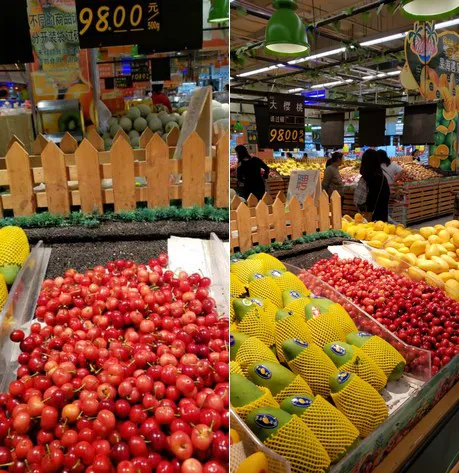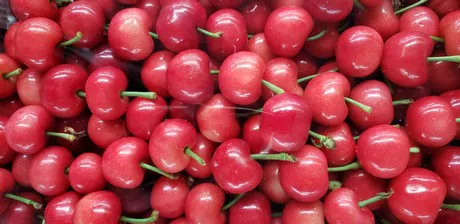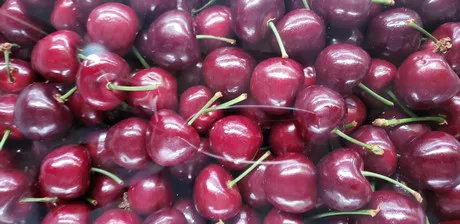"Chinese cherries gradually enter the domestic market after the production seasons of Chilean and Australian cherries comes to an end. There are currently two early-season varieties on the market: Shandong Red Lantern and Dalian Early Beauty. The latter is sweeter and matches the flavor of imported cherries. The Dalian Early Beauty cherries from glasshouse plantations have already been on the market for a month. The supply volume is expected to rapidly increase by the end of this month. As for the prices of large cherries, the wholesale price of Red Lantern cherries is 25-30 yuan [3.73-4.48 USD] per 0.5 kg, while the wholesale price of Early Beauty cherries is 35-40 yuan [5.23-5.97 USD] per 0.5 kg. The retail price of cherries in supermarkets is around 58-98 yuan [8.66-14.63 USD] per 0.5 kg." This is according to Mr. Wang Dawei.

"Sweet cherries from Europe were introduced to China more than 100 years ago. This variety was mainly developed in Yantai, Dalian, and Qinghuangdao, with additional cherry plantations in other areas of China following at a slower pace. Domestic cherry varieties already have a cultivation history of more than 3,000 years. Chinese cherries ripen early and cherry trees produce large volumes, but the fruit is small and the commercial value is low. Furthermore, Chinese cherry orchards are not well-managed, and farmers apply modern technology in various degrees, which leads to large disparities in quality and price."

"The cherry production volume will rapidly grow in these few months. The prices of cherries are different in the markets of first-, second- , and third-tier cities. Peak prices usually occur early in the season in February and near the end of the season in August. Another influence on the cherry price is supply volume. Furthermore, the fresher the cherries, the higher the price. The price of cherries that arrive fresh on the market is therefore much higher than the price of older cherries."

